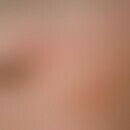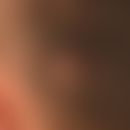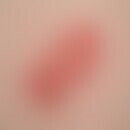HistoryThis section has been translated automatically.
The first description dates from 1928 by the Swiss ophthalmologist Adolphe Franceschetti (1896-1968).
DefinitionThis section has been translated automatically.
Epithelial recurrent erosive dystrophy (ERED) is a very rare congenital form of superficial corneal dystrophy with painful, recurrent erosions of the corneal epithelium manifesting as early as infancy.
You might also be interested in
EtiopathogenesisThis section has been translated automatically.
The disease is caused by mutations in the COL17A1 gene on chromosome 10 gene locus q25.1.
ManifestationThis section has been translated automatically.
Childhood
ClinicThis section has been translated automatically.
Small gray anterior stromal patches associated with larger focal gray-white disc-shaped, circular, or ring-shaped lesions with central clarity in Bowman's layer and the immediately underlying anterior stroma 0.2 to 1.5 mm in diameter appear clinically diagnostic of ERED.
Differential diagnosisThis section has been translated automatically.
The other forms of granular corneal dystrophy should be distinguished.
Progression/forecastThis section has been translated automatically.
The disease manifests itself in the first decade of life. Later, the symptoms gradually decrease to stop in the third or fourth decade of life.
Note(s)This section has been translated automatically.
Bi-allelic COL17A1 mutations have previously been associated with epidermolysis bullosa junctionalis, with recurrent corneal erosions reported in some cases (Jonsson F et al. 2015).
LiteratureThis section has been translated automatically.
- Jonsson F et al (2015) Mutations in collagen, type XVII, alpha 1 (COL17A1) cause epithelial recurrent erosion dystrophy (ERED). Hum Mutat 36:463-473.
- Vahedi F et al. (2018) Epithelial Recurrent Erosion Dystrophy Secondary to COL17A1 c.3156C>T Mutation in a Non-white Family. Cornea 37:909-911.
Incoming links (2)
COL17A1 gene; Epidermolysis bullosa junctionalis generalized intermediaries (non-herlitz);Disclaimer
Please ask your physician for a reliable diagnosis. This website is only meant as a reference.




